Reducing Environmental Impact through Our Products
The NAND flash memory and Solid State Drive (SSD) products that Kioxia Group supplies are integrated into a wide range of applications and used throughout the world. We are making efforts to reduce the environmental impact of our products during every stage of their lifecycle. This includes reducing CO2 emissions intensity per unit of product capacity during manufacturing and providing efficient products that consume as little energy as possible when in use.
Given the recent spread of AI, the expansion of data centers, and the acceleration of technological innovation in autonomous driving, the need for larger capacity and faster NAND flash memory and SSD products has been growing even further. Kioxia Group’s ongoing development of integration technology and the resulting increased memory capacity are allowing us to reduce the level of CO2 emissions per product capacity during manufacturing. Specifically, this is being achieved by reducing the amount of electricity and materials used in manufacturing per unit of product capacity, and by improving the energy consumption efficiency of our products for processing 1 GB data when they are in use.
On the other hand, the spread of AI is expected to increase demand for flash memory and SSDs with higher speeds and larger capacities. From an environmental perspective, there is concern that this will result in even more electricity being required to operate such devices. For this reason, we expect the need for highly energy consumption-efficient, large-capacity flash memory and high-throughput SSD products to expand to a number of new fields. Furthermore, in order to understand the environmental impact of our products throughout their lifecycles, Kioxia Group has been evaluating CO2 emissions for its products using the LCA (Life Cycle Assessment)method,* and since March 2024, we have been obtaining third-party verification by the environmental risk assessment authority DNV. We plan to gradually expand the number of products evaluated for CO2 emissions through LCA in the future.
- A method for quantitatively assessing the environmental impact of a product or service throughout its lifecycle (raw material extraction, manufacture, transportation, usage, and waste disposal or recycle) or at a specific stage in its lifecycle.
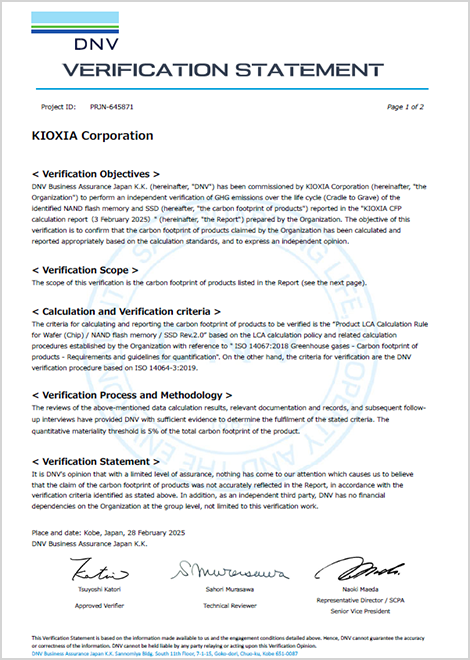
In addition, our R&D department is studying technologies that will restore NAND performance with the goal of enabling the reuse of used SSDs.
In order to contribute to the realization of a low-carbon society, Kioxia Group will continue to work on the improvement of energy consumption efficiency and capacity expansion through technological development as a priority.
Kioxia Group Products Helping to Protect the Environment


Targets for Improving the Energy Consumption Efficiency of Our Products
Kioxia Group will utilize these advanced technologies to further improve the energy consumption efficiency of its products.
Specifically, we have set an ambitious target of reducing the energy consumed per 1 GB of data processed by our products by 50% compared to FY2017 levels, by FY2025.
In FY2024, we successfully achieved a reduction of around 38% in the energy consumption required to process 1 GB data compared to FY2017 levels. We were able to do this by achieving higher speeds, by integrating advanced technologies in our NAND flash memory, and by designing our own optimal controllers.
Targets: Improving the Energy Consumption Efficiency of Our Products


Case Studies: Reducing Energy Consumption during Product Use
UFS Ver. 4.0 Embedded Flash Memory with Smaller Package Size and Improved Performance
Kioxia Corporation has reduced the package size and improved the performance of its UFS1 4.0 embedded flash memory product and commenced mass production. The package size is approximately 18% smaller than the company’s conventional package size,2 thus saving resources and contributing to board space efficiency and design flexibility.
Furthermore, energy consumption (J/GB) during write operations has improved by approximately 6%. Faster data download speed and shorter response time have also been achieved through improved read and write performance. These performance improvements make the product suitable for various next-generation mobile devices, including high-end smartphones compatible with 5G high-speed networks. The new product is supported in capacities of 256 GB, 512 GB, and 1 TB.
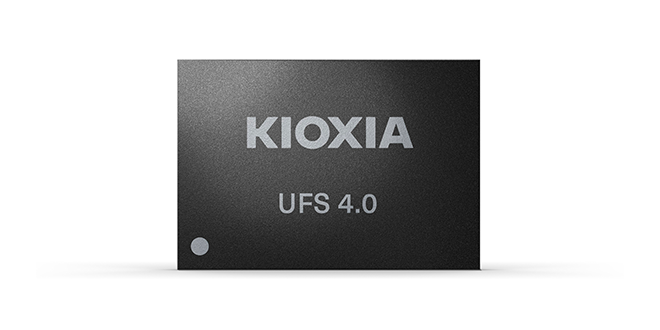


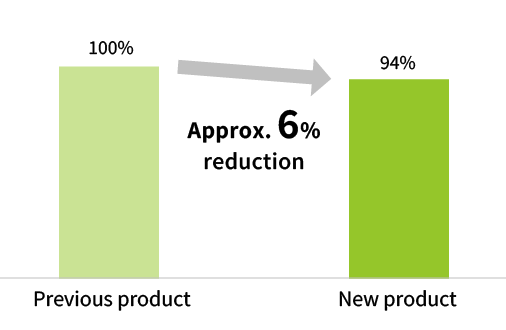
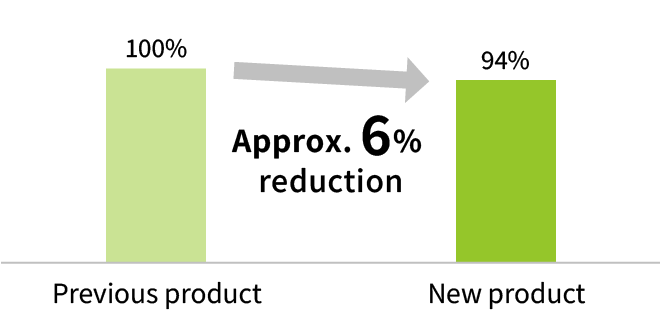
Key Features of the Product:
- Read / write speed improvement over previous generation 3 : approx. +15% sequential write, +50% random write and +30% random read.
- Package size is 9 mm x 13 mm and package thickness is 0.8 mm (256 GB and 512 GB) and 0.9 mm (1 TB), resulting in an approx. 18% reduction compared to conventional package size (11 mm x 13 mm)
The UFS Ver. 4.0 devices integrate the company’s innovative BiCS FLASH™ 3D flash memory and a controller in a JEDEC-standard package. UFS 4.0 incorporates MIPI M-PHY 5.0 and UniPro 2.0 and supports theoretical interface speeds of up to 23.2 gigabits per second (Gbps) per lane or 46.4 Gbps per device. UFS 4.0 is backward compatible with UFS 3.1.
- 1 Universal Flash Storage (UFS): A category of embedded memory products built to JEDEC UFS-standard specifications. Its serial interface allows UFS to support full duplexing, which enables concurrent reading and writing between the host processor and UFS device
- 2 Compared with KIOXIA’s previous generation UFS 4.0 embedded flash memory product
- 3 Compared with the previous generation product (512GB product model number THGJFLT2E46BATP)
- Notes:
- 1. The advertised memory on each KIOXIA product is based on the on-board memory capacity, not the amount of memory available for data storage by the end user. A portion of the memory capacity is used for memory management and other functions. Please refer to the respective product specifications for details on the usable capacity (user area). Memory capacity is calculated assuming 1 GB = 1,073,741,824 bits.
- 2. 1 Gbps is calculated as 1,000,000,000 bits/s. Read and write speeds are the best values obtained in a specific test environment at Kioxia, and Kioxia warrants neither read nor write speeds in individual devices. Read and write speeds may vary depending on conditions such as the device used.
- 3. Company names, product names and service names may be trademarks of third-party companies.
KIOXIA XD8 Series of PCIe🄬 5.0 NVMe™ EDSFF E1.S SSDs for Cloud and Hyperscale Environments
Kioxia Corporation has commercialized XD8 Series PCIe® 5.0 Enterprise and Datacenter Standard Form Factor (EDSFF) E1.S SSDs. Designed for the rapidly evolving cloud environment, the KIOXIA XD8 Series delivers superior performance and heat management, meeting the latest needs for higher performance, enhanced efficiency, and greater scalability in data centers. The new drives empower cloud providers and hyperscalers to optimize their infrastructure.
Moreover, the new drives are the third generation of E1.S SSDs from Kioxia and are compliant with PCIe 5.0 (32 GT/s x 4) and NVMe™ 2.0 specifications. The 7.68 TB model delivers a reduction of approximately 20% in energy consumption per 1 GB of data processing during sequential reads.1 The series is available in capacities of 1.92, 3.84 and 7.68 TB.

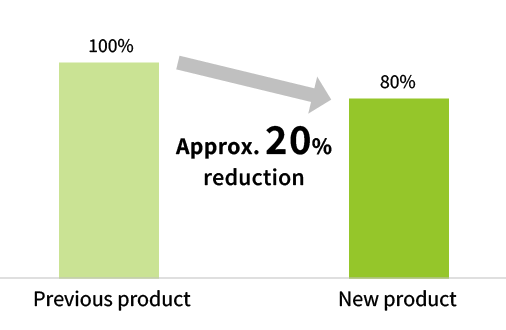

Key Features of the KIOXIA XD8 Series:
- Additional NVMe support includes NVM Express Management Interface (NVMe-MI™) v1.2c
- Sequential read performance up to 12,500 megabytes per second (a 73% improvement over the previous generation).1, 3 Sequential write performance up to 5,800 megabytes per second (a 20% improvement)1, 3
- Random Read performance of 2,300 K Input Output Per Second (IOPS) (a 48% improvement). Random write performance up to 250 K IOPS (a 25% improvement) 1, 2, 3
- EDSFF E1.S with 9.5mm and 15mm heat sink options
- Kioxia-designed SSD controller, BiCS FLASH™ 3D flash memory and firmware
- Non-SED models, and the TCG Opal SSC SED-compliant model with security options
- Full end-to-end data protection and power loss protection
1 Compared to the previous generation KIOXIA XD7P Series SSD (7.68 TB capacity model)
2 IOPS: Input Output Per Second (Or the number of I/O operations per second)
3 Read and write speed may vary depending on various factors such as host devices, read/write conditions, and file size.
- Notes:
- 1. For calculating memory capacity, the company defines 1 megabyte (MB) as 1,000,000 (10^6) bytes, 1 gigabyte (GB) as 1,000,000,000 (10^9) bytes, and 1 terabyte (TB) as 1,000,000,000,000 (10^12) bytes. Computer operating systems, however, report storage capacity using powers of 2, meaning 1 GB = 2^30 bytes = 1,073,741,824 bytes, and therefore show less storage capacity. Drive capacity will vary based on file size, formatting, settings, software, operating system, and other factors.
- 2. SED optional model supports TCG Opal SSC except for some features.
- 3. SED optional model is not available in all countries due to local regulations.
- 4. PCIe is a registered trademark of PCI-SIG.
- 5. NVMe and NVMe-MI are registered or unregistered trademarks of NVM Express, Inc. in the United States and other countries.
- 6. Other company names, product names and service names may be trademarks of third-party companies.